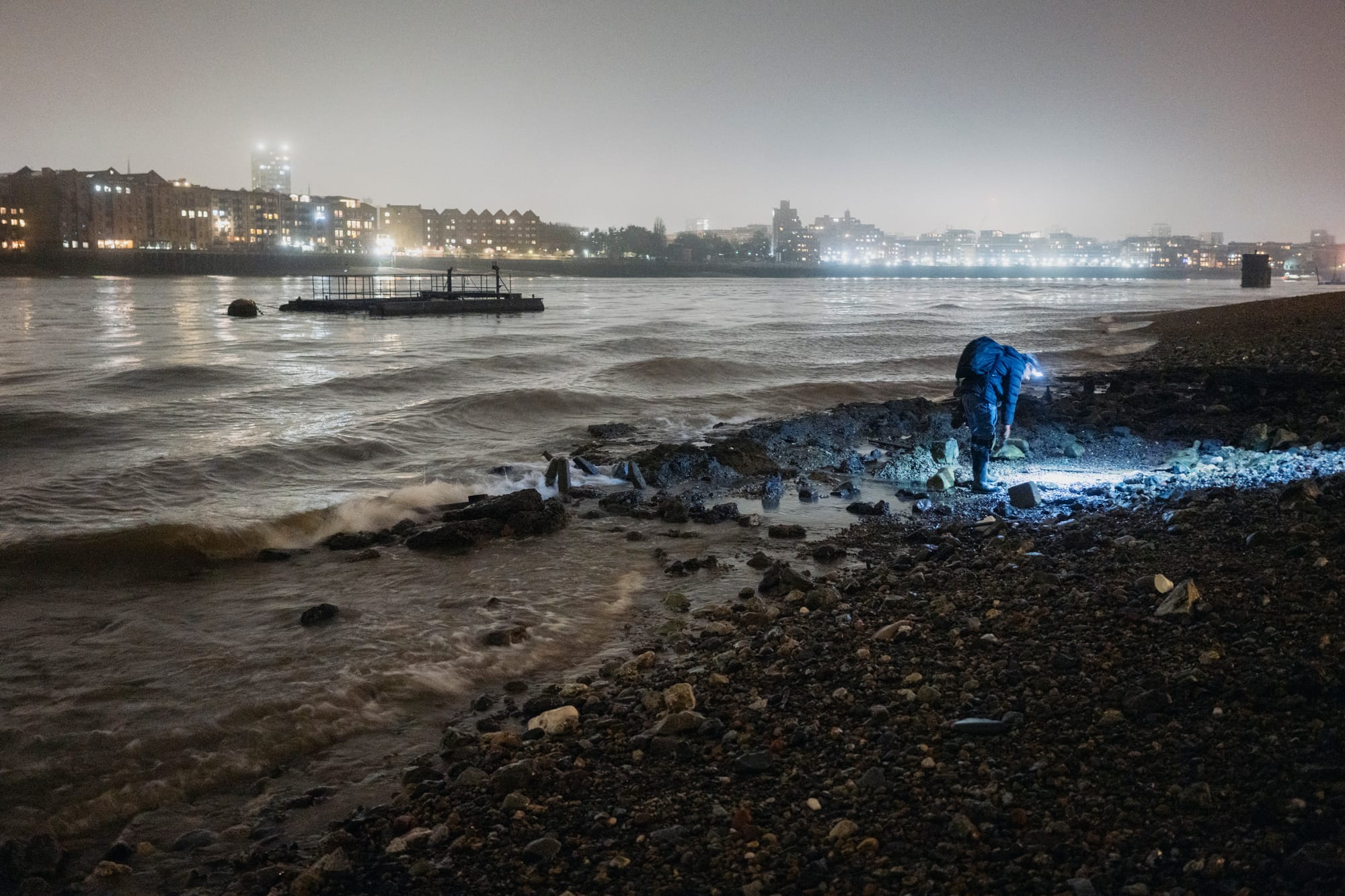Jason Sandy is dressed for the occasion. Headlight, knee pads, thick gloves, and, of course, wellies. He almost floats above the mud and muck of the Thames, constantly scanning the ground for hidden artefacts while I awkwardly lurch behind, slipping and sliding across the uneven river bank in my trainers.
It’s eerily quiet on this cold Friday evening, and as the sun sets, we begin our mudlark expedition just south of Tower Bridge. On the bank, we’re accompanied only by the occasional seagull, a boat floating past, and a thick layer of fog that blurs the distant flashing lights —- no other person in sight. Sandy and I are not searching for anything in particular. Just something, preferably something old.
Sandy has been a mudlark for 14 years, an increasingly popular hobby that entails digging through mud up and down the Thames in the hope of finding objects that date as far back as the Roman era. The Thames bank produces an eclectic mix of objects each day. In recent years, it’s spat out a ball-and-chain shackle from a drowned escapee prisoner, a 400-year-old sword and a bronze statue of Emperor Hadrian’s head.
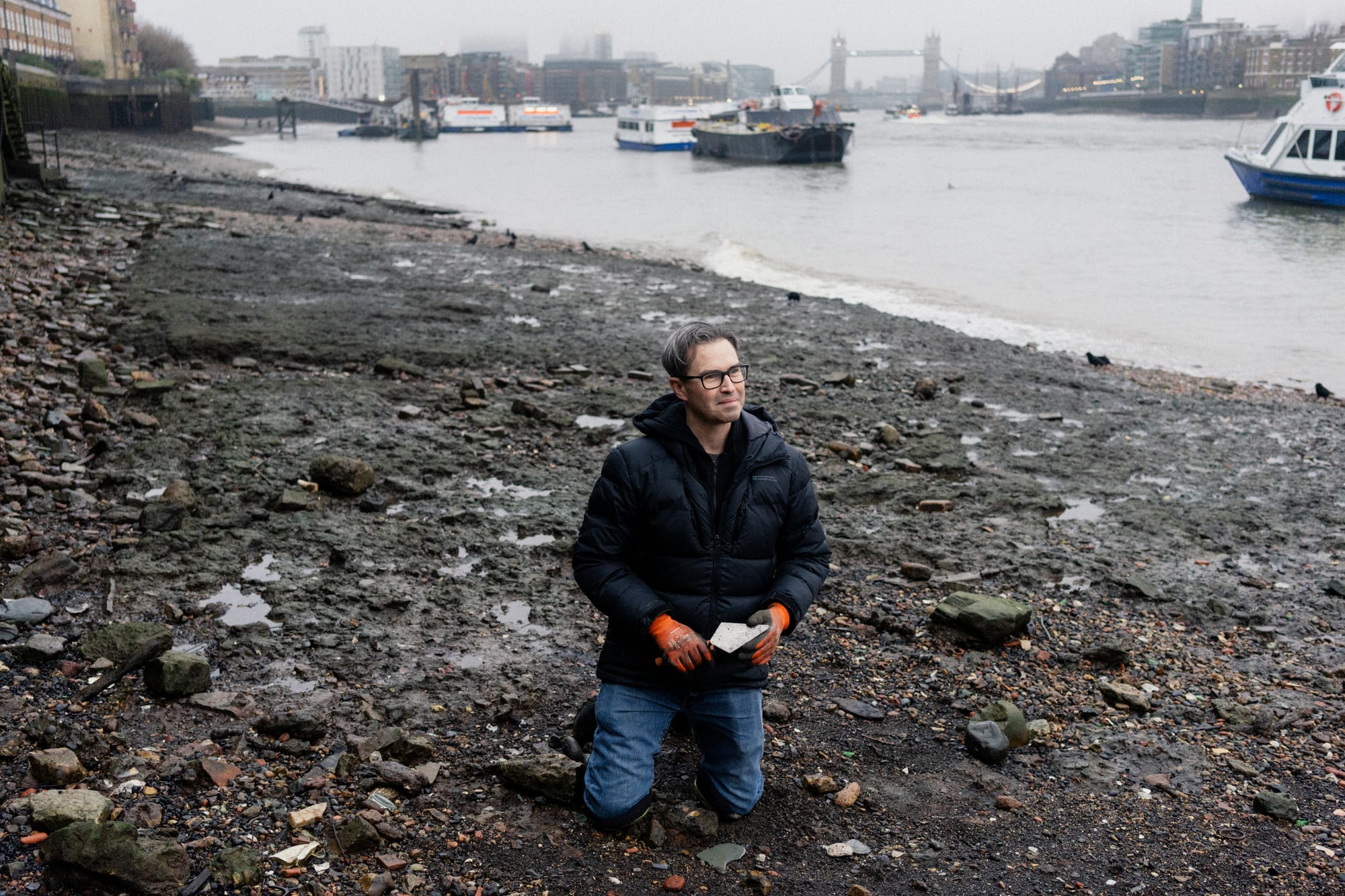
The Thames is a tidal waterway, and the waves constantly churn and mix up the shore, meaning you never step on the same bank twice. So each day, sat enticingly for those seeking, are unfound artefacts waiting on the riverside. Quickly, Sandy picks up an 18th-century perfume bottle lying amongst a couple of rocks — our first significant find of the day. Mudlarking is a popular hobby for two reasons. Firstly, there’s the connection to a Britain and London lost in time. The feeling of holding something made 2,000 years ago is “mind-boggling,” Sandy tells me. There’s also the meditative relief of concentrating on the riverbank for hours at a time, alone, unplugged, with only the slow sounds of the waves. “It's good for your mental health,” Sandy remarks, eyes still scanning the ground. Kristina, another mudlark who has been visiting the banks for three years, agrees. “The foreshore is like a different world,” she says. “I find peace there.”
Sandy’s passion for history floods every conversation. Moving slowly along the Thames shoreline, he acts as my unofficial tour guide for the evening, pulling stories from both the mud and water around us. Across the river from us, he says, is a 1700s execution dock used for Captain Kidd; Kidd and his fellow pirates were locked in a metal cage suspended over the river as the tide slowly rose to drown them.
This knowledge comes from extensive research. While Sandy mudlarks for around four hours a week, he spends a further 15 hours researching the history of his finds. This is not uncommon for mudlarks — many of those I spoke to began with only a passing interest in London’s past but slowly developed an obsession with the Thames and the history it spews out.
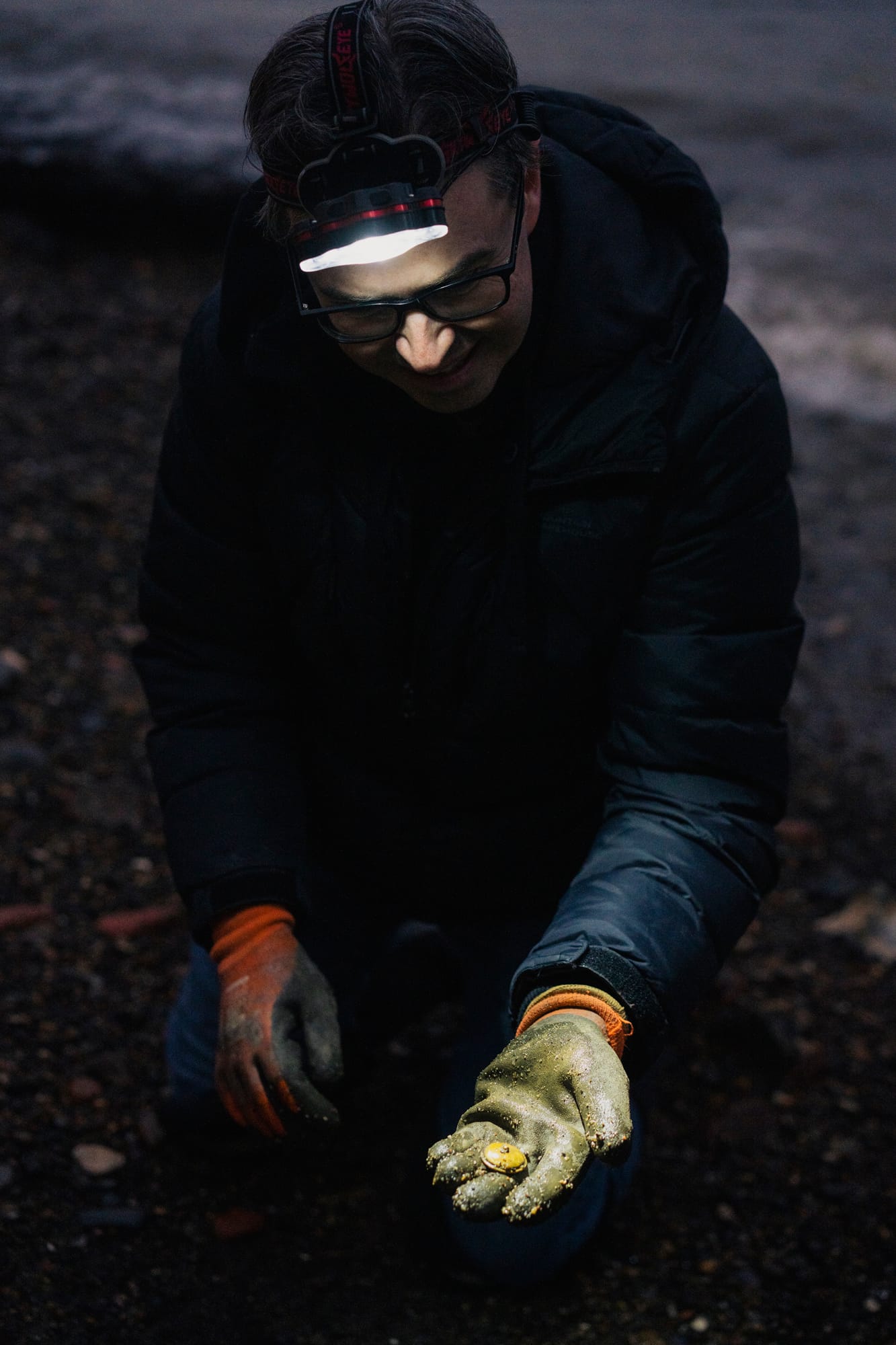
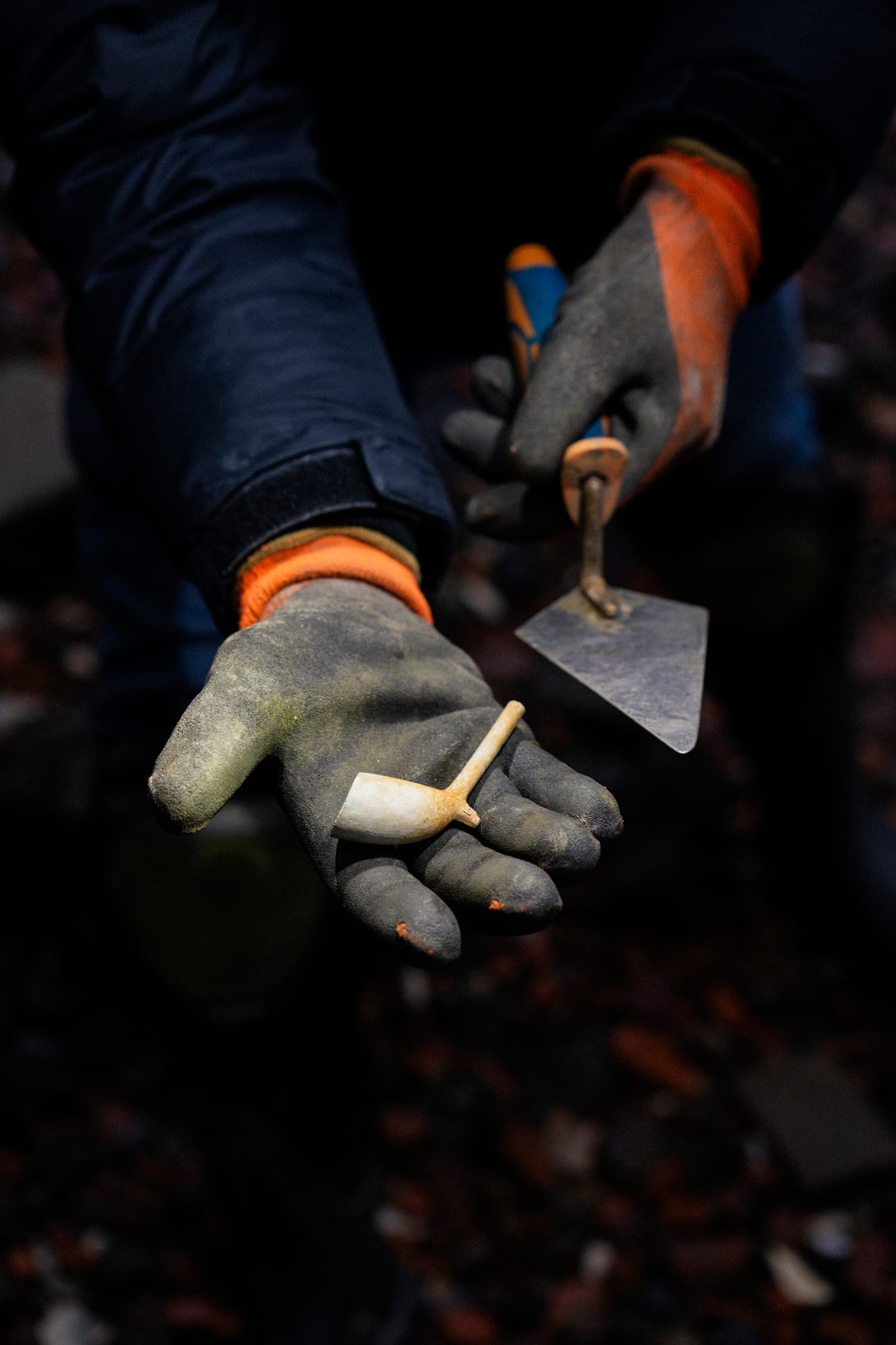
Riverside finds (Photo by Harry Mitchell)
Sandy’s historical connection is not just one of passion; it’s also personal. In the early 17th century, his ancestors migrated from Britain to the US, settling in Virginia, a state historically reliant on the tobacco trade. On his first day out mudlarking, Sandy found a tobacco pipe from a similar era, which provided a “tangible connection” to his ancestors. "I thought it probably had a bit of Virginian tobacco from the 17th century still in it. So from that point on, I was instantly hooked and just kept coming back.”
Wearing an expensive puffer jacket, the well-groomed, clean-shaven Sandy looks a little different to the Victorian mudlarks who began the excavation he continues. Back then, it was a for-profit endeavour proliferated by the poorest members of society —- young children and older women. Often barefoot, they would scavenge through the mud and filth for coal and driftwood to sell.
Mudlarking took an unofficial hiatus for most of the 20th century before its popularity grew again in the 1970s. Propelled by the innovation of metal detectors, a more sophisticated type of mudlark began to scour the Thames, selling off the rare artefacts they found. Quickly, the Port of London Authority (PLA) intervened and ruled that mudlarks couldn’t sell their finds. Now, they keep everything or donate their objects to museums. In Sandy’s 14 years on the Thames, he has amassed a personal collection of more than 10,000 objects, which he stores at his home.
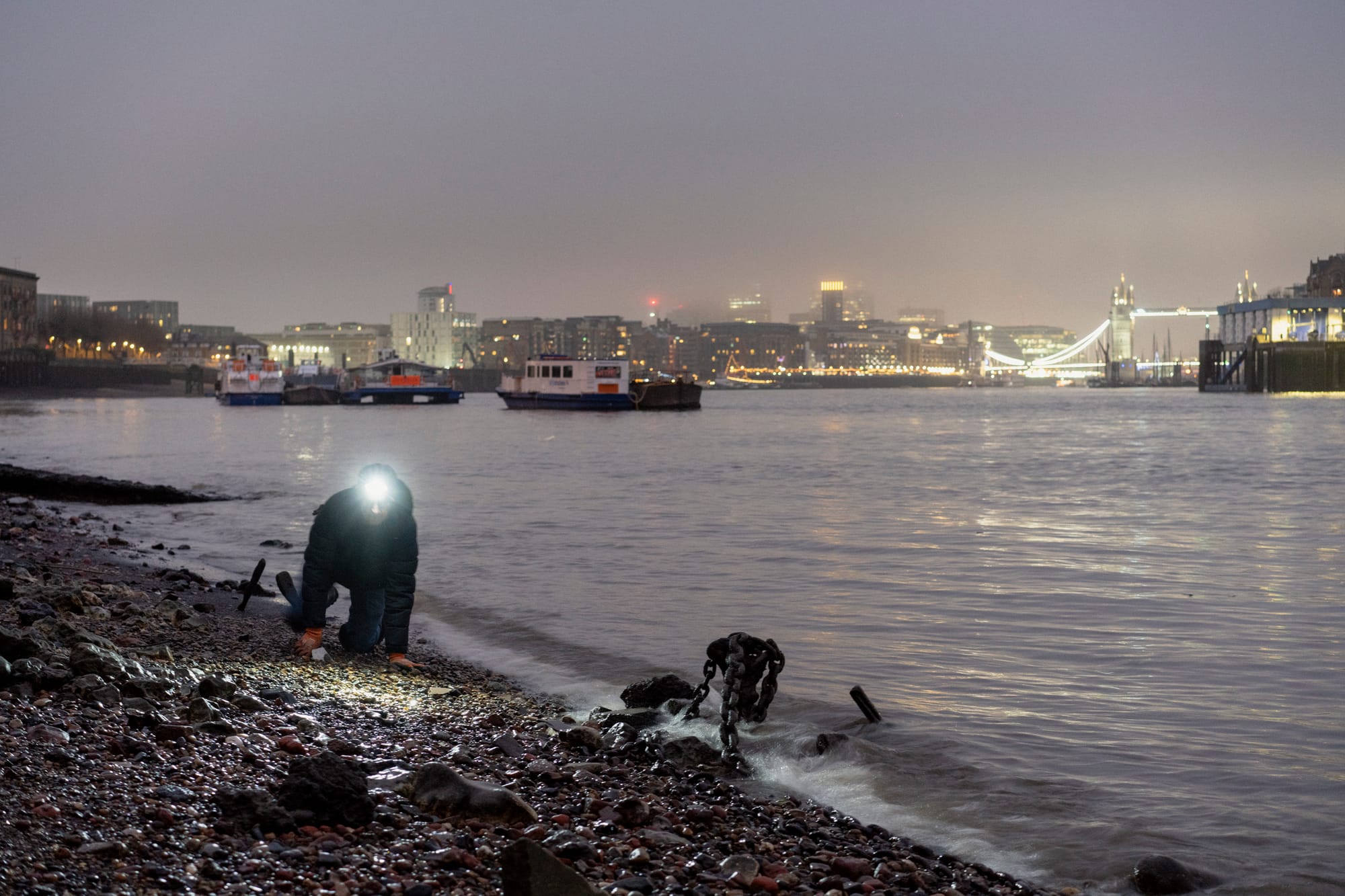
Today, mudlarks use an array of techniques to uncover the artefacts. Sandy is equipped with just his eyes, hands and a trowel. He is not opposed to metal detectors, but the accumulation of tetanus-filled nails nestling between the rocks would render the device useless. He is completely immersed when searching, crawling across the ground, upturning rocks with his hands and digging forensically with the trowel. The key to searching, Sandy says, is looking for objects “round and square,” as these man-made shapes stick out amongst the naturally uneven clutter.
Roughly halfway between the Mayflower and Angel pubs, he excitedly calls me over, his eyes still stuck downward, looking at his newest find. Mudlarks view the floor differently from us. He points to a general area as I squint to search for the object. Thirty seconds pass before Sandy, perhaps growing impatient, makes it blatantly clear: a tiny coin shimmering under the light of our head torches. He identifies it as a brass currency token of the kind used in the 17th and 18th centuries, puts it away, and moves on.
Within a moment of picking up an object, Sandy can identify not only its purpose but also its era. Roman, medieval, Victorian — it's automatic to his trained eyes. Later, he pauses midsentence while strolling, as he spots and instantly recognises a cracked part of a Roman mortarium (a sort of ancient pestle) that I had walked by, unaware. Sandy prefers these everyday objects, he tells me, as they give him a connection to common people. “I can relate to the things that I find — I can’t relate to the things in a museum, because I could never afford a diamond ring or whatever.”
Sandy says mudlarking is a “solitary type of thing”. But while they work alone, each expedition is followed by a collective trip for breakfast on a morning expedition or to a pub for later endeavours. Together, they lay out their pocketed treasures, helping identify rarer pieces and swapping trinkets, Sandy says, if people have gaps in their collections. Currently, though, the mudlark community is facing a crisis.
During lockdown, mudlarking exploded. It was a mixture of increased visibility through mudlark influencers — Sandy himself boasts 100,000 followers on Instagram — and “because there was nothing else to do, and the river provided an escape,” he tells me. However, you cannot simply start digging — mudlarks require a license from the PLA to begin their search. In 2016, there were just a few hundred mudlarks; by the pandemic, more than 5,000 people had applied for a licence. As a result, they suspended licence approval for a couple of years until it recommenced a few months ago. And here is where the crisis lies.
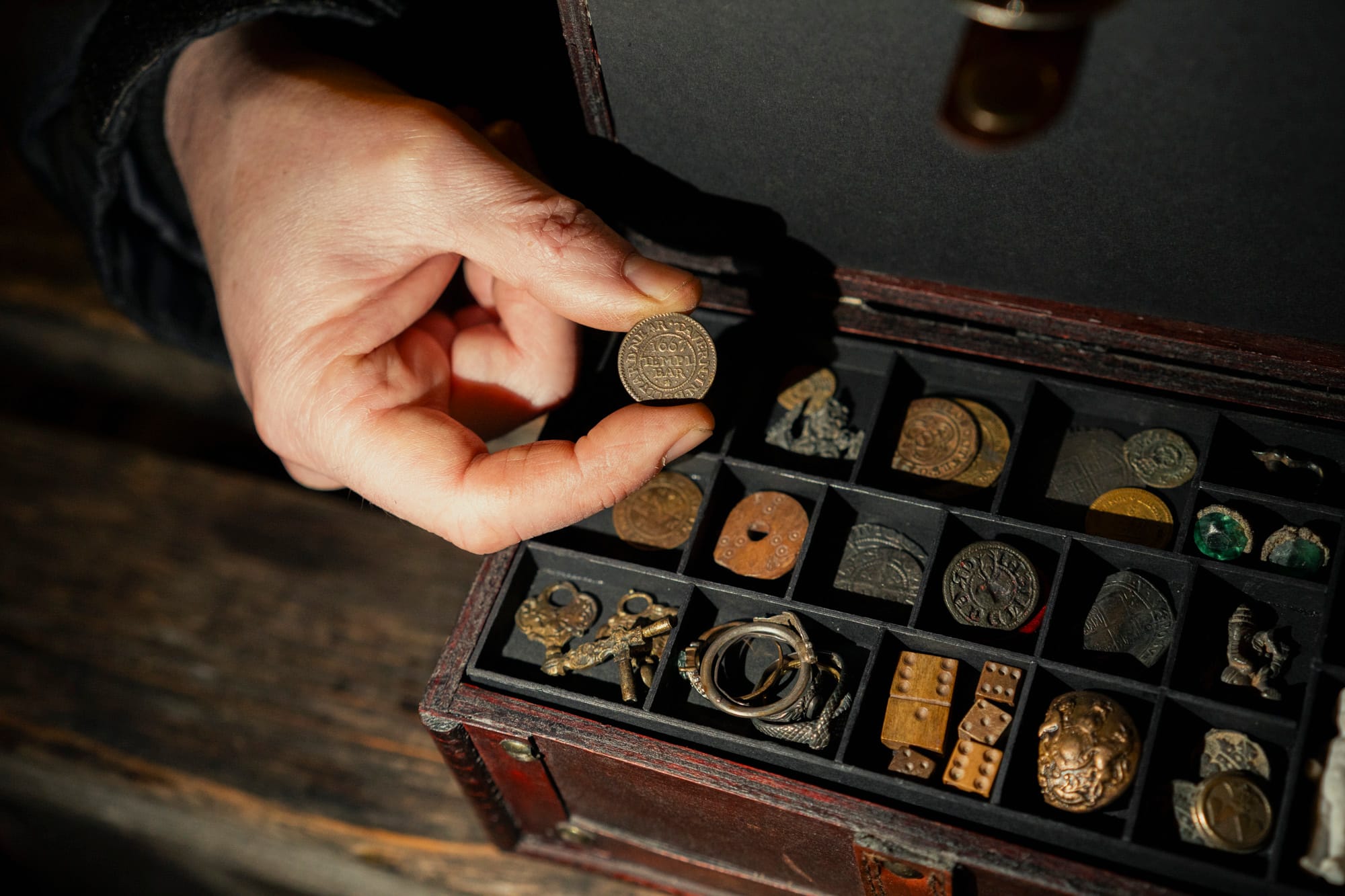
Before the reissuing, mudlark licences would automatically renew. Now, however, mudlarks must reapply each year, placing some at the back of a 5,000-strong waitlist — meaning they’ll likely never mudlark again. The bureaucratic decision will end the decades-long careers of amateur historians and archaeologists, rendering them also a relic of the riverbank.
Punctuated by the sounds of the waves lapping up against the stones, Sandy and I begin to discuss the Thames itself, which he describes as a “liquid history book,” one where “every object that you find takes you on a different journey of discovery”. Looking around, the ground is brimming with centuries of stuff: animal bones and teeth tossed out by restaurants, coins issued BC, clay tobacco pipes, pottery, nails, glass, mud, roof tiles and potentially some musket balls.
Each section of the Thames is marked by its history. For example, in the shadow of the Mayflower pub, most of our finds today date to the 16th and 17th centuries, due to the global shipping network that relentlessly ran up and down the Thames. In areas of central London, Roman paraphernalia is more common — along with rumours of an armoured elephant buried in the mud.
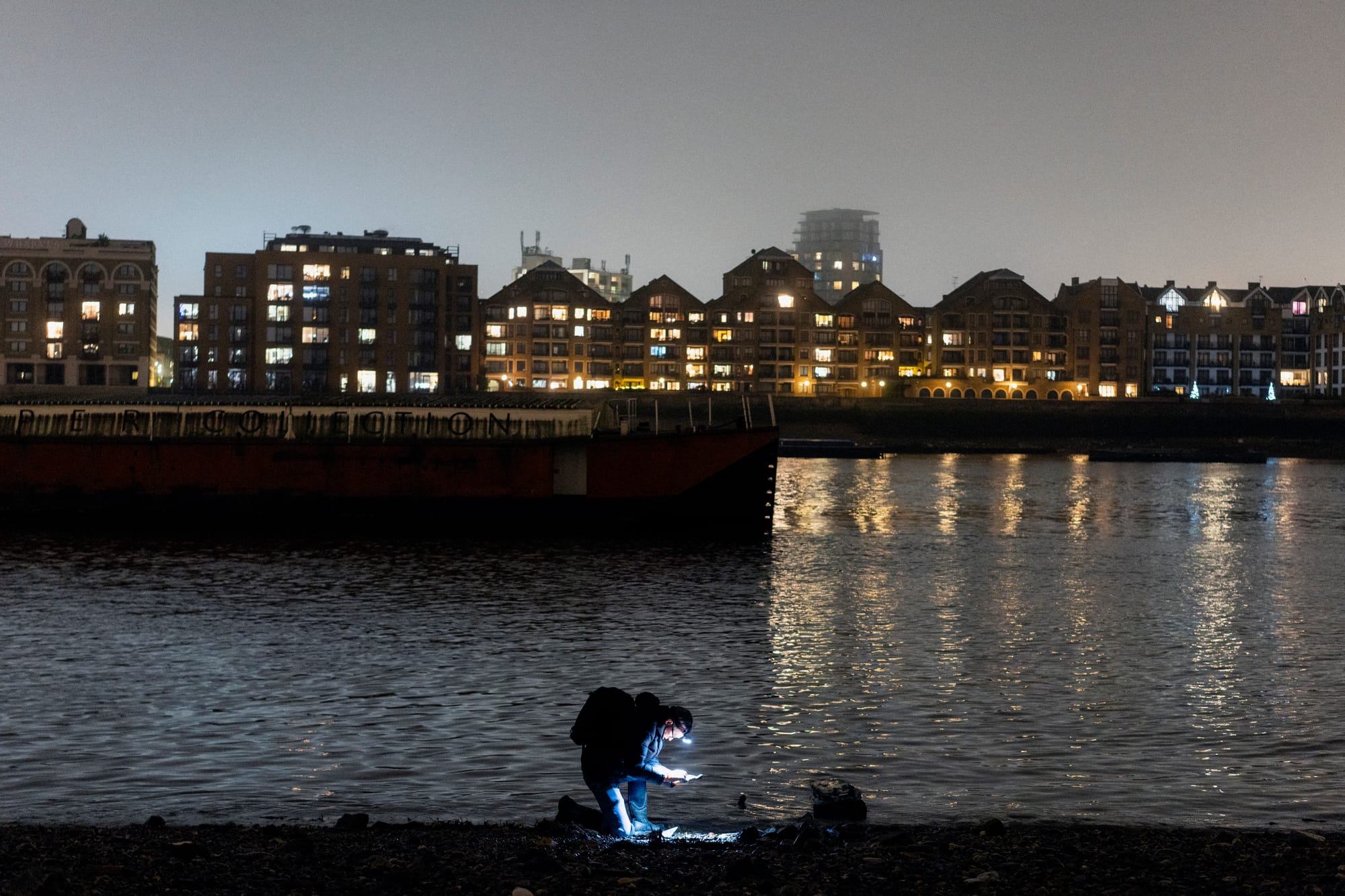
While Sandy has yet to find the tusk, he has found some unusual objects. He once discovered the “freshly shedded skin of a boa constrictor,” the owner of which was later found slithering on the other side of the river. As mudlarks are often the first out in the morning, a more painful part of the hobby is the potential to find dead bodies washed up on the foreshore. Sandy has found three.
After a fairly satisfying expedition, we retreat to the pub, where Sandy shows me some of his greatest finds. Roman coins, undated engagement rings and a Victorian wig curler fill a little brown box that functions as his makeshift museum for London and its inhabitants — “hands-on history,” as Sandy terms it.
Holding these objects, your mind harks back to the people who used them, all that time ago. Perhaps someone dropped their tobacco pipe when passing by on a boat; or a heartbroken fiancé tossed their engagement ring off Tower Bridge; or a soldier quickly shot their musket and missed their target during a gunfight. And then, for a few more centuries, these things sat somewhere beneath the water, before being found once more.
If you enjoyed today's edition, please forward it to friends and encourage them to join our mailing list.

Comments
How to comment:
If you are already a member,
click here to sign in
and leave a comment.
If you aren't a member,
sign up here
to be able to leave a comment.
To add your photo, click here to create a profile on Gravatar.







